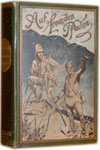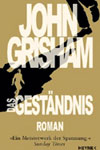Exposé des nouvelles découvertes sur l'electricité et le magnétisme, de MM. Oersted, Arago, Ampère, H.Davy, Biot, Erman, Schweiger, De la Rive, etc. AMPERE'S "RIGHT-HAND RULE"
AMPÈRE, André-Marie & BABINET, Jacques
Verkäufer
Landmarks of Science Books, Richmond, Vereinigtes Königreich
Verkäuferbewertung 5 von 5 Sternen
![]()
AbeBooks-Verkäufer seit 17. März 2016
Beschreibung
Beschreibung:
First edition, very rare separately-paginated offprint, of this "very valuable Treatise" (Mottelay). It is in this work that Ampère (1775-1836) first introduced (pp. 26-27) his famous rule for determining the direction of deviation of a magnetic needle placed near an electric current (the rule was stated by Oersted in an obscure Danish publication in the same year) (Brain et ail, Hans Christian Oersted and the Romantic Legacy in Science, p. 323). Ampère pictured an observer swimming inside the wire, feet in the direction from which current comes, head in the direction it goes; as the observer sees it, a magnetized needle always turns toward the observer's left. "In a four page circular letter, dated Copenhagen, July 21st, 1820, H.C. Oersted communicated his great discovery that a closed voltaic circuit exerts forces on an adjacent magnetic needle. In more modern language: a current-carrying electric circuit gives rise to magnetic forces in its surroundings. Oersted had found the long sought affinity between electricity and magnetism" (Ekelöf, Catalogue of Books and Papers in Electricity and Magnetism, p. 286). "Scarcely had the news of Oersted's discovery reached France, when a French philosopher, Ampère, set to work to develop the important consequences which it involved. Physicists had long been looking for the connection between magnetism and electricity, and had, perhaps, inclined to the view that electricity was somehow to be explained as a magnetic phenomenon. It was, in fact, under the influence of such ideas, that Oersted was led to his discovery. Ampère showed that the explanation was to be found in an opposite direction. He discovered the ponderomotive action of one electric current on another, and, by a series of well-chosen experiments, he established the elementary laws of electro-dynamic action, starting from which, by a brilliant train of mathematical analysis, he not only evolved the complete explanation of all the electro-magnetic phenomena observed before him, but predicted many hitherto unknown. The results of his researches may be summarized in the statement that an electric current, in a linear circuit of any form, is equivalent in its action, whether on magnets or other circuits, to a magnetic shell bounded by the circuit, whose strength at every point is constant and proportional to the strength of the current. By his beautiful theory of molecular currents, he gave a theoretical explanation of that connection between electricity and magnetism which had been the dream of previous investigators. 'Oersted', remarks Babinet, 'was the Christopher Columbus of magnetism; Ampère became its Pizarro and its Fernando Cortez'" (Mottelay, Bibliographical History of Electricity and Magnetism, p. 474). Ampère's collaborator in the present publication, Jacques Babinet (1794-1872), "did excellent work in different areas of physics. He was an early advocate of the wave theory of light [and] produced important results in the theory of refraction" (Ekelöf, p. 287). An additional interesting aspect of the present paper is a first outline of Ampère's ideas concerning an electric telegraph (p. 71). The 'Exposé' is an offprint from the Supplement to the French translation of Thomas Thompson's System of Chemistry: 'Système de Chimie. Traduit par J. Riffault.' The supplement is entitled: 'Supplément présentant ce qui a été fait de nouveau dans cette science depuis l'époque (1819) où cette traduction a paru,' Paris, 1822 (see Cole 1283). In the supplement the text of Ampère and Babinet occupies pp. 163-256. Overmier and Senior p. 127; not in Gartrell or Wheeler Gift. COPAC lists BL, Oxford and Science Museum only. 8vo, pp. [iv], 91, [1, blank], with 33 figures in text (light browning and foxing, a couple of ink smudges). Contemporary plain blue wrappers (lower outer corner of rear wrapper with closed tear). Bestandsnummer des Verkäufers ABE-1586517105345
Bibliografische Details
Titel: Exposé des nouvelles découvertes sur ...
Verlag: Paris: Mequignon-Marvis
Erscheinungsdatum: 1822
Einband: Soft cover
Zustand: Very Good
Auflage: 1st Edition
AbeBooks ist ein Internet-Marktplatz für neue, gebrauchte, antiquarische und vergriffene Bücher. Bei uns finden Sie Tausende professioneller Buchhändler weltweit und Millionen Bücher. Einkaufen bei AbeBooks ist einfach und zu 100% sicher — Suchen Sie nach Ihrem Buch, erwerben Sie es über unsere sichere Kaufabwicklung und erhalten Sie Ihr Buch direkt vom Händler.
Millionen neuer und gebrauchter Bücher bei tausenden Anbietern
Neue und gebrauchte Bücher
Neue und gebrauchte Exemplare von Neuerscheinungen, Bestsellern und preisgekrönten Büchern. Eine riesige Auswahl an günstigen Büchern.
Antiquarische Bücher
Von seltenen Erstausgaben bis hin zu begehrten signierten Ausgaben ? bei AbeBooks finden Sie eine große Anzahl seltener, wertvoller Bücher und Sammlerstücke.
Versandkostenfreie Bücher
Hier finden Sie viele hunderttausend neue, gebrauchte und antiquarische Bücher, die Ihnen unsere deutschen und internationalen Händler versandkostenfrei liefern.






